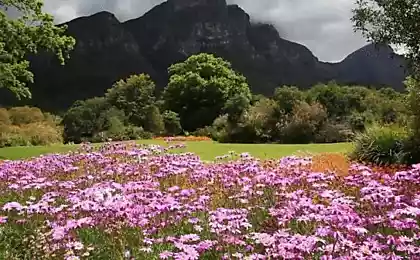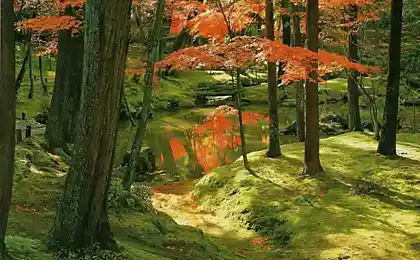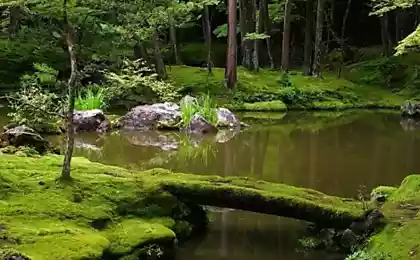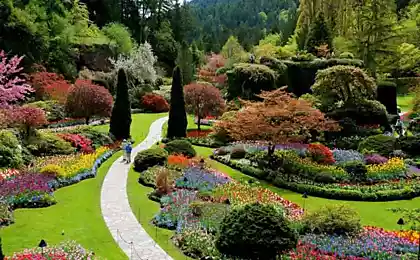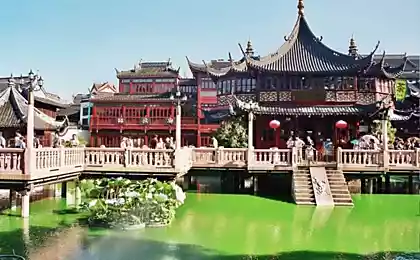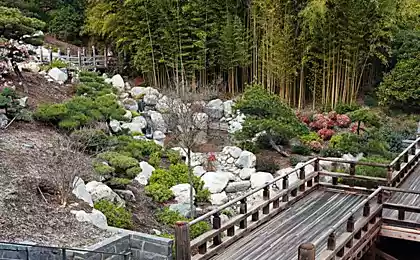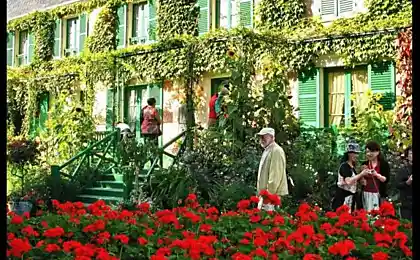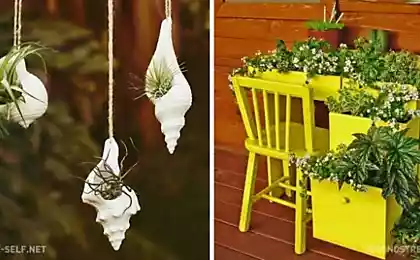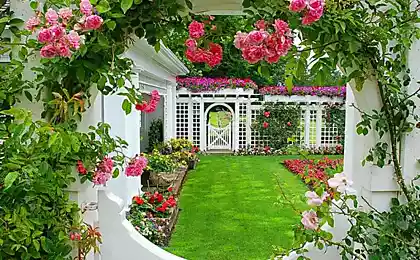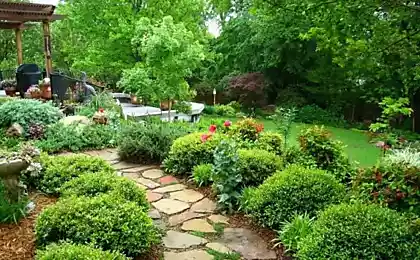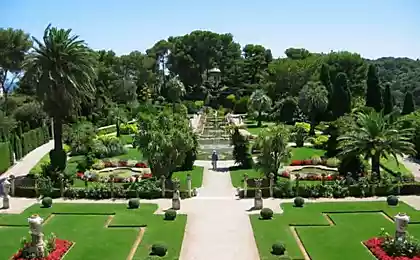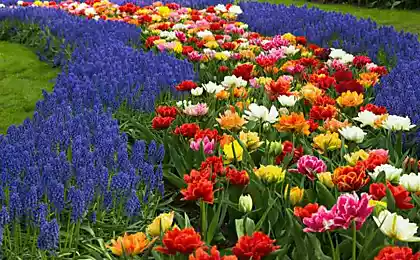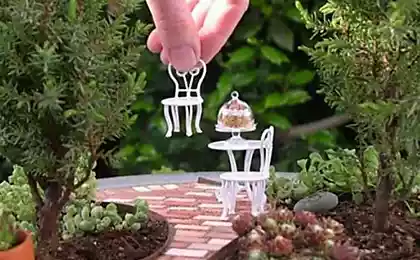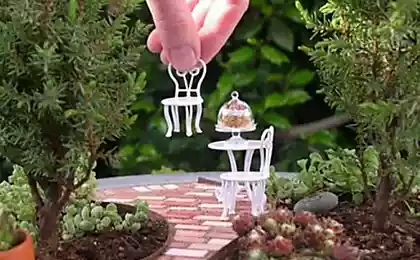647
Moss Garden
Garden mosses in Japan - the personification of beauty and fluidity
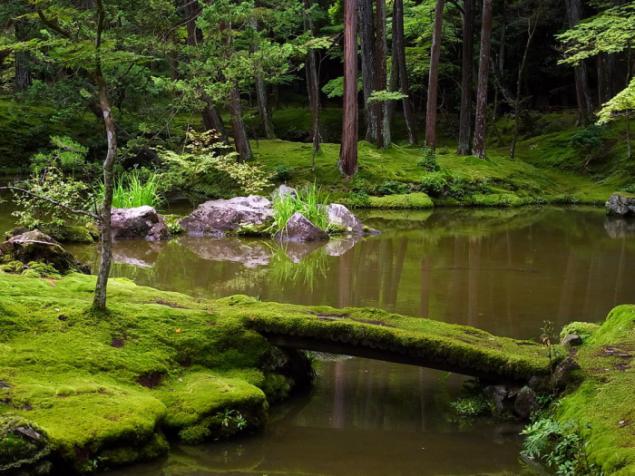
The early Zen gardens include garden Sayhodzi, the design of which has made an enormous contribution Muso caucus. Completely redesigned landscape garden, the monk-artist created an extensive garden moss, which is located on two levels.
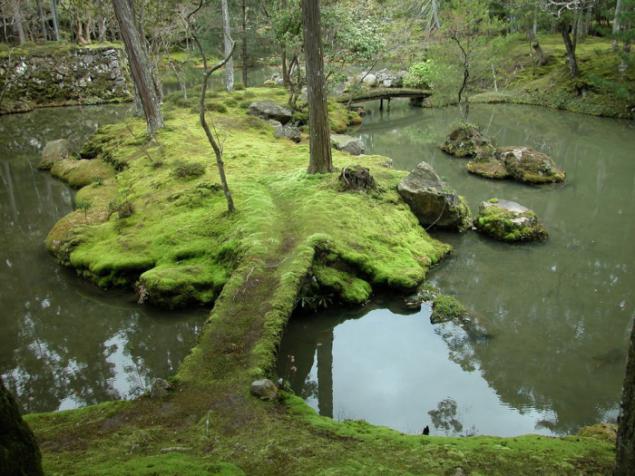
Immediately it should be noted that these two quite contrasting with respect to its components and placement, but that's what makes this attraction Japan attractive to tourists.
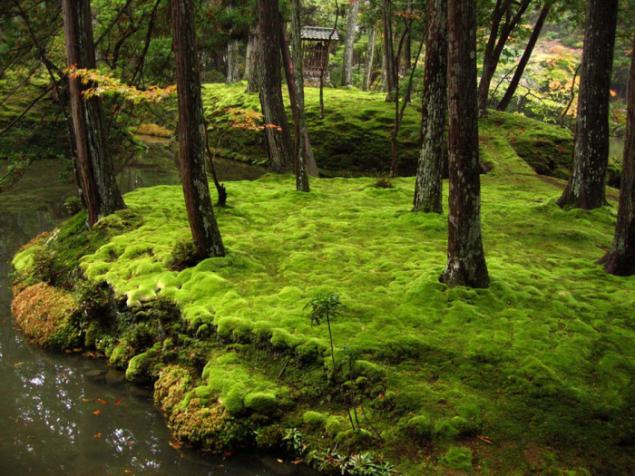
The lower part was intended directly for the garden and pond moss, and the top - dry landscape (garden) which has now been rebuilt and, unfortunately, lost its specificity.
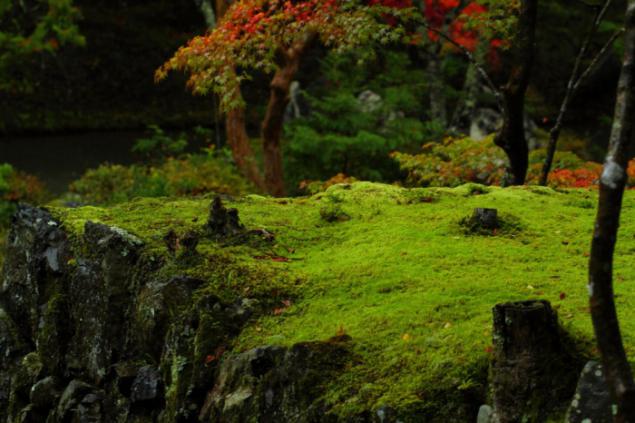
According to Japanese researchers, in this garden are the two basic forces of nature yin and yang, which have long been the embodiment of positive and negative beginning. They express the unity, permanence and continuity of movement.
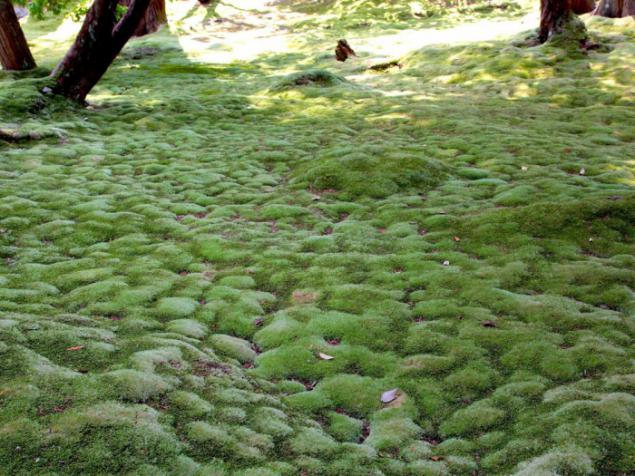
Most of the attention is paid to the artist top garden. So there was a symbolic three-tiered cascade, gives a sense of the severity of a certain nature.
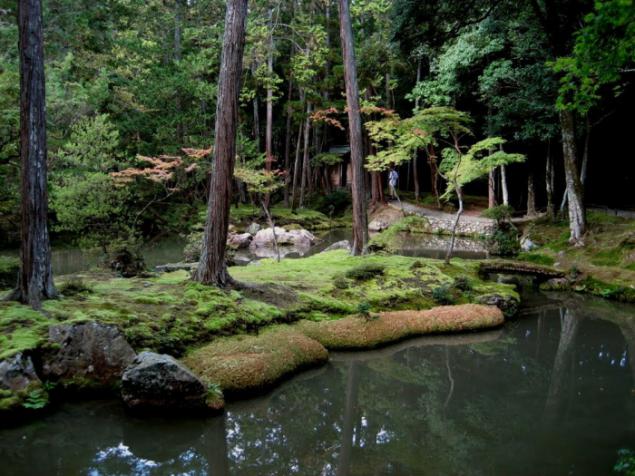
The role of mountains, compressing a torrent, was given a lichen-covered stones of a powerful, one that is located at the edge of the stage, called the stone of contemplation. This name he received because of Ashikaga Yoshimitsu - ruler of Japan (XIVvek), who was very fond of sitting on it, to enjoy the scenery of the garden.
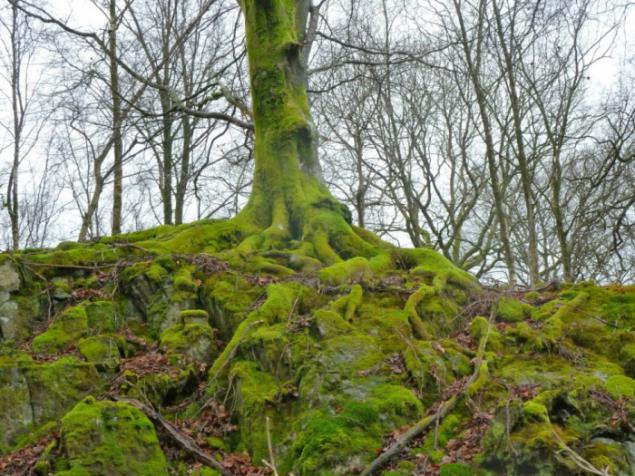
Today, to get acquainted with the beautiful songs of the garden can be a walk through the garden on a paved road. This, incidentally, forced route, which is the key to safety is carefully guarded velvet carpet of moss, which covers not only the earth, but the trunks of trees, rocks and even foundation near the pond, which outlines resemble the Chinese character for "Blue».
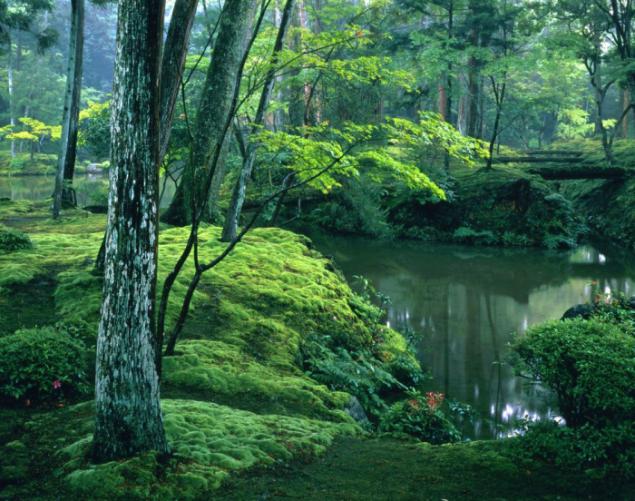
Rocks islands resembling a ship sailing to the island paradise, divide the surface of the pond. This sight always makes visitors Sayhodzi stop for a minute and not only admire these landscapes, but also to experience the extraordinary light filtered through the leaves and soak in emerald moss or brownish surface, enriching, so its texture.
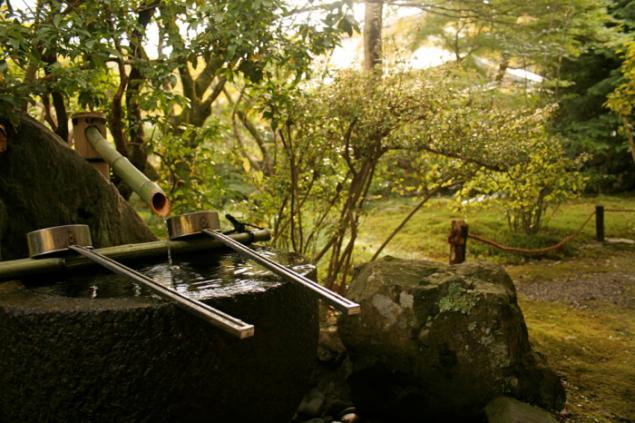
©

The early Zen gardens include garden Sayhodzi, the design of which has made an enormous contribution Muso caucus. Completely redesigned landscape garden, the monk-artist created an extensive garden moss, which is located on two levels.

Immediately it should be noted that these two quite contrasting with respect to its components and placement, but that's what makes this attraction Japan attractive to tourists.

The lower part was intended directly for the garden and pond moss, and the top - dry landscape (garden) which has now been rebuilt and, unfortunately, lost its specificity.

According to Japanese researchers, in this garden are the two basic forces of nature yin and yang, which have long been the embodiment of positive and negative beginning. They express the unity, permanence and continuity of movement.

Most of the attention is paid to the artist top garden. So there was a symbolic three-tiered cascade, gives a sense of the severity of a certain nature.

The role of mountains, compressing a torrent, was given a lichen-covered stones of a powerful, one that is located at the edge of the stage, called the stone of contemplation. This name he received because of Ashikaga Yoshimitsu - ruler of Japan (XIVvek), who was very fond of sitting on it, to enjoy the scenery of the garden.

Today, to get acquainted with the beautiful songs of the garden can be a walk through the garden on a paved road. This, incidentally, forced route, which is the key to safety is carefully guarded velvet carpet of moss, which covers not only the earth, but the trunks of trees, rocks and even foundation near the pond, which outlines resemble the Chinese character for "Blue».

Rocks islands resembling a ship sailing to the island paradise, divide the surface of the pond. This sight always makes visitors Sayhodzi stop for a minute and not only admire these landscapes, but also to experience the extraordinary light filtered through the leaves and soak in emerald moss or brownish surface, enriching, so its texture.

©

